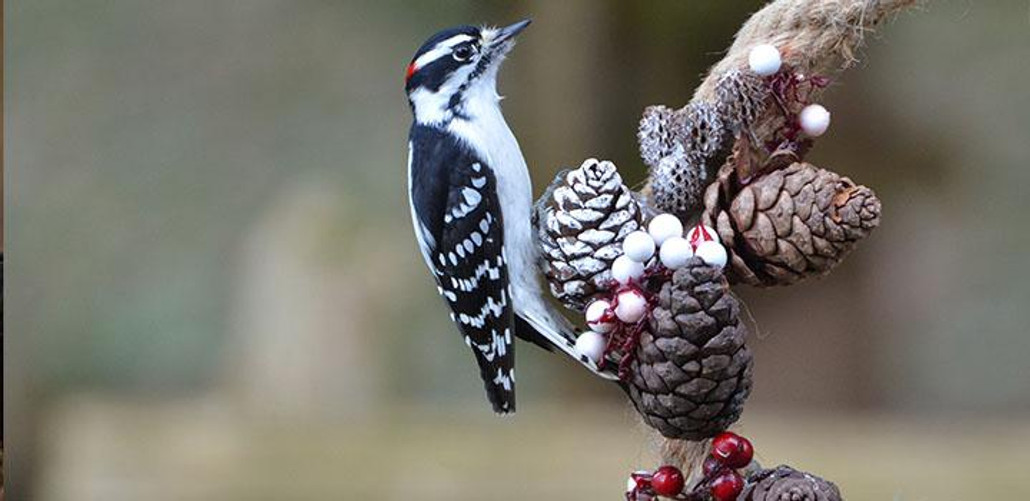
Downy Woodpecker
Posted by Grange Co-op on 17th Jan 2015
Male: A small (6-7in.) woodpecker with an all-white belly, black and white spotted wings, a black line running through its eyes, a short black bill about half the length of the head, a white stripe down the back and several black spots along sides of white tail. Males have a red mark on nape of neck.
Female: Same as male, but lacks red mark on nape.
 NESTING:
NESTING:
The Downy is a cavity nester in which both the male and female excavate in dead wood. Nest is lined with wood chips. Mostly the male incubates 4-5 white eggs, raising one brood per year. Only rarely does the Downy accept a nest box.
FEEDING:
Both the male and female feed on a variety of insects, especially wood-boring beetles and larvae. The male prefers smaller branches, the upper canopy and angled limbs; the female favors the trunk and upright limbs. They also eat fruit, seeds and sap from sapsucker wells and at feeders: suet, nuts and sunflower seeds.
RECOMMENDED FEED:
Any flavor suet, black oil sunflower seed, Rogue Chickadee Mix, Rogue Nut Treat. Shop Wild Bird Food.
RECOMMENDED FEEDERS:
Natural log suet feeder, tail prop suet feeder, any tube, mesh or hopper feeder with sunflower seed, and any peanut feeder. Shop Wild Bird Feeders.
HABITAT:
Resides year-round in deciduous and mixed woodlands, city woodlots and parks; prefers riparian willows, alders and cottonwoods. Found in Oregon where trees are present. Doesn’t breed in high elevations, but often moves to higher elevations in summer in search of food.
OTHER INTERESTING FACTS:
Like all woodpeckers, the Downy has a long barbed tongue to pull insects from tiny spaces. Both sexes drum with a loud, rapid pecking on a branch or hollow log to attract a mate and announce territories that are rarely more than 5 acres. Sounds of pecking for food or nest-hole excavation are different with light taps in irregular rhythms. The Downy will winter roost in a cavity. They often travel during non-breeding seasons with chickadees, kinglets and warblers while searching for food.
COMPARE TO:
Hairy Woodpeckers look almost identical but are larger, stockier, and their bill is almost as long as the head. Their white outer tail feathers are unspotted. The Hairy Woodpecker excavates nest cavities in live wood.
Would you like to attract birds to your yard? We’ve got a great selection of products to help you and your feathered friends get together. Shop our Wild Bird department now.
